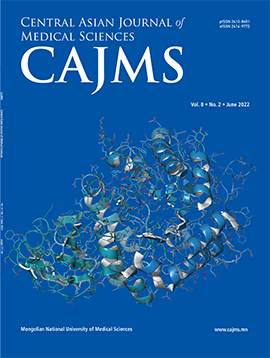Association of Menopausal Symptoms with Body Composition Pattern and Body Mass Index Across Menopausal Age Among Mongolian Women
DOI:
https://doi.org/10.24079/cajms.2020.06.006Keywords:
Menopausal Symptoms, Body Composition, BMI, CVD Risk, MongoliaAbstract
Objectives: To investigate the correlation of body fat distribution pattern and body mass index (BMI) on the prevalence and clinical manifestation of menopausal symptoms across the menopausal stage among Mongolian women. Methods: A survey was conducted amongst a total of 1084 women aged 40-65 years Ulaanbaatar city and selected provinces representing five main remote regions of Mongolia. A questionnaire was used to collect demographic and socioeconomic data. Menopause related characteristics were evaluated using the Menopause-specific Quality of Life (MENQOL) questionnaire. Further, measurements were recorded to determine waist-to-hip-ratio and body mass index (BMI). Pearson's Chi-Square test was used to correlate. Results: Using the waist-to-hip-ratio, 84.4% of participants had the android type, and 15.6% were of the gynoid type. As for BMI, 38.4% were overweight, and 28.8% were obese. In multiple regression analysis, BMI had significant relationships with psychosocial and sexual problems (p<0.05). Moreover, BMI and menopause status were independent risk factors for the development of cardiovascular disease. Postmenopausal obese and overweight women were 1.6 times more likely to have cardiovascular disease than women in the perimenopausal status (p<0.05). Conclusions: Overweight and obese perimenopausal women have a lower quality of life due to the prevalence of sexual and psychosocial symptoms. Obese postmenopausal Mongolian women are at significantly higher risk of developing cardiovascular disease.
Downloads
269
Downloads
Published
How to Cite
Issue
Section
License
Copyright (c) 2020 Mongolian National University of Medical Sciences

This work is licensed under a Creative Commons Attribution-NonCommercial 4.0 International License.




